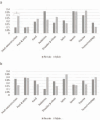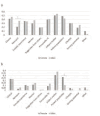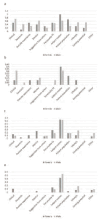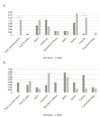Gender Differences in Medical Student Interest in Arthroplasty
- PMID: 40606721
- PMCID: PMC12212338
Gender Differences in Medical Student Interest in Arthroplasty
Abstract
Background: The majority of orthopaedic residents match into fellowship in the subspecialty they are most interested in at the start of residency, however there is a lack of understanding of medical student interest in orthopaedic subspecialties. Our objective was to determine interest in arthroplasty among medical students interested in orthopaedic surgery, and to identify factors contributing to student interest and disinterest..
Methods: An anonymous online survey was developed and distributed to medical students interested in orthopaedic surgery at 23 United States allopathic and osteopathic medical schools through their school administrators. Descriptive statistics were calculated, and a Fisher's exact test was used for categorical variables.
Results: 183 medical students (56% female) completed the survey for an estimated 29% response rate. Significantly fewer female medical students were interested in adult reconstruction compared to their male counterparts (10% versus 29%, p = 0.004). The most commonly identified factors contributing to interest by female students were interest in the subject matter (100%) and patient population (70%), while male students most commonly identified clinical experience (74%) and presence of a mentor (63%). Significantly fewer female medical students received the suggestion to pursue arthroplasty compared to males (0% versus 11%, p = 0.002).
Conclusion: Female medical students are significantly less interested in arthroplasty and receive significantly less encouragement to consider arthroplasty than their male counterparts. Factors influencing both interest and disinterest in orthopaedic subspecialties differ between male and female medical students.Level of Evidence: V.
Keywords: diversity; equity; gender; medical education.
Copyright © The Iowa Orthopaedic Journal 2025.
Conflict of interest statement
Disclosures: The authors report no potential conflicts of interest related to this study.
Figures






Similar articles
-
A Shadow of Doubt: Is There Implicit Bias Among Orthopaedic Surgery Faculty and Residents Regarding Race and Gender?Clin Orthop Relat Res. 2024 Jul 1;482(7):1145-1155. doi: 10.1097/CORR.0000000000002933. Epub 2024 Jan 12. Clin Orthop Relat Res. 2024. PMID: 38214651 Free PMC article.
-
Prescription of Controlled Substances: Benefits and Risks.2025 Jul 6. In: StatPearls [Internet]. Treasure Island (FL): StatPearls Publishing; 2025 Jan–. 2025 Jul 6. In: StatPearls [Internet]. Treasure Island (FL): StatPearls Publishing; 2025 Jan–. PMID: 30726003 Free Books & Documents.
-
Is Program Director Gender Associated With Gender Diversity Among Orthopaedic Surgery Residency Programs?Clin Orthop Relat Res. 2024 Aug 1;482(8):1351-1357. doi: 10.1097/CORR.0000000000003070. Epub 2024 Apr 16. Clin Orthop Relat Res. 2024. PMID: 39031037 Free PMC article.
-
The educational effects of portfolios on undergraduate student learning: a Best Evidence Medical Education (BEME) systematic review. BEME Guide No. 11.Med Teach. 2009 Apr;31(4):282-98. doi: 10.1080/01421590902889897. Med Teach. 2009. PMID: 19404891
-
A rapid and systematic review of the clinical effectiveness and cost-effectiveness of topotecan for ovarian cancer.Health Technol Assess. 2001;5(28):1-110. doi: 10.3310/hta5280. Health Technol Assess. 2001. PMID: 11701100
References
-
- 2022 Main Residency Match: Results and Data. The National Resident Matching Program. 2022.
-
- Aiyer AA, Mody KS, Dib AG, et al. Medical Student Mentorship in Orthopaedic Surgery. The Journal of the American Academy of Orthopaedic Surgeons. 2021;29(16):681–690. - PubMed
-
- Ajayi PT, Murdock CJ, Destine H, Trenchfield D, Aiyer A, Oni J. Trends in Racial, Ethnic, and Gender Diversity in Orthopaedic Surgery Adult Reconstruction Fellowships from 2007-2021. The Journal of arthroplasty. 2023 - PubMed
-
- Bratescu RA, Gardner SS, Jones JM, et al. Which Subspecialties Do Female Orthopaedic Surgeons Choose and Why?: Identifying the Role of Mentorship and Additional Factors in Subspecialty Choice. Journal of the American Academy of Orthopaedic Surgeons Global research & reviews. 2020;4(1) - PMC - PubMed
MeSH terms
LinkOut - more resources
Full Text Sources
